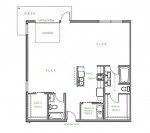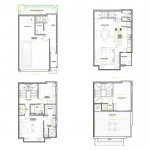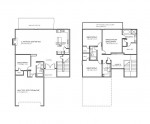This is Day 87 of the Slow Home Project and we need you to join us in our quest to evaluate the design quality of houses in nine North American cities in nine months. This week we are reviewing the results of our work in the Dallas / Fort Worth metroplex, and today we are very pleased to announce the Slow Home Award Winners.
First of all, a big thank you to all the Slow Home viewers who have been putting in their comments about the new site. It is going to take us a bit of time to work out all the kinks so we appreciate your patience! The overall opinion seems to be that everyone likes the new look of Slow Home and we hope that as more of the new features become activated next week that you continue to send your comments to us about what you like or what you would like to see us change about the site.
Now, onto the winners in Dallas/ Fort Worth for the best designed new house projects in the categories of apartment/ lofts, town houses and single family houses as voted by the viewers.
Best Design – Apartment/ Loft – Dallas/ Fort Worth
 Lots of discussion here amongst the group, but the vote tally awards the prize to the Buzz Loft project built by Change Chamber Development and designed by T. Howard & Associates, Architects, Inc. This 1,252 sq ft unit sits within a “sustainable community of 49 condominiums geared to those seeking socioeconomic balance” as described on the project website.
Lots of discussion here amongst the group, but the vote tally awards the prize to the Buzz Loft project built by Change Chamber Development and designed by T. Howard & Associates, Architects, Inc. This 1,252 sq ft unit sits within a “sustainable community of 49 condominiums geared to those seeking socioeconomic balance” as described on the project website.
Best Design – Town Houses – Dallas/ Fort Worth
 The other two categories were tight in the voting, but not this one. The clear winner here was the Trinity Townhomes project. Many Slow Homers will remember this as the project we had analyzed for the “Which House Should I Buy” episode two weeks ago. Surprisingly close to downtown Dallas – just an 8 minute walk as it is right next to the river – this project has amazing views of the skyline and very livable floor plans.
The other two categories were tight in the voting, but not this one. The clear winner here was the Trinity Townhomes project. Many Slow Homers will remember this as the project we had analyzed for the “Which House Should I Buy” episode two weeks ago. Surprisingly close to downtown Dallas – just an 8 minute walk as it is right next to the river – this project has amazing views of the skyline and very livable floor plans.
Best Design – Single Family Houses – Dallas/ Fort Worth
 Another tight race and the source of a lot of debate amongst the viewers, but the project 8427 Lakemont edged out the “Cube House” by the narrowest of margins. The winner was developed by Classic Urban Homes and should be commended for creating a very elegant design that is simple, well suited to its neighborhood context and offers a breath of fresh air in a city where most new single family homes are poorly designed.
Another tight race and the source of a lot of debate amongst the viewers, but the project 8427 Lakemont edged out the “Cube House” by the narrowest of margins. The winner was developed by Classic Urban Homes and should be commended for creating a very elegant design that is simple, well suited to its neighborhood context and offers a breath of fresh air in a city where most new single family homes are poorly designed.
So, our bags are packed and we are off to Colorado next week to get going on analyzing houses in Denver – our fourth stop in our nine city quest to evaluate the design quality of houses in 9 North American Cities in 9 months. We are looking forward to seeing everyone on Monday!



